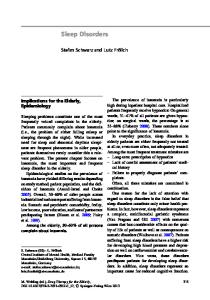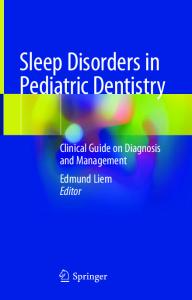Updates on Pediatric Sleep Disorders
- PDF / 690,875 Bytes
- 13 Pages / 595.276 x 790.866 pts Page_size
- 60 Downloads / 210 Views
SLEEP AND SLEEP APNEA AT THE EXTREMES (D GOZAL, SECTION EDITOR)
Updates on Pediatric Sleep Disorders Joshua August 1 & Kiran Maski 1 Published online: 7 August 2020 # Springer Nature Switzerland AG 2020
Abstract Purpose of Review Pediatric sleep medicine is a developing field with recent advances in pathophysiology, diagnosis, and/or management of circadian rhythm disorders, obstructive sleep apnea, narcolepsy, and parasomnias. This article aims to provide a review and highlight recent updates in these specific sleep disorders. Recent Findings Our understanding of circadian rhythms and melatonin profiling is becoming clearer, which opens up new diagnostic possibilities and treatment refinement. In obstructive sleep apnea, symptoms do not clearly correlate with the apneahypopnea index, and other sleep measures need to be studied in order to understand how treatments may provide benefit to patients. There has been the first clinical treatment trial in pediatric narcolepsy and promising drugs are on the horizon. While parasomnia treatment has not advanced much, our understanding of its pathophysiology and associated diagnostic features is growing. Summary Advancements across a number of areas of pediatric sleep medicine offers exciting avenues for more accurate and timely diagnoses and evidence-based management to improve patient care. Keywords Delayed sleep phase syndrome . Obstructive sleep apnea . Narcolepsy . Parasomnias
Introduction Sleep needs are greatest in infancy and childhood, and sleep is critical for many processes including learning and memory consolidation [1], immune regulation [2, 3], and metabolic regulation [3]. Roughly 30% of young children are estimated to have significant difficulties with bedtime problems or night wakings [4, 5]. Insufficient sleep is also a widespread problem, with about 25% of adolescents obtaining the recommended 9 h minimum per night and 56–71% of toddler and school-aged children sleeping for their recommended amounts [6, 7]. While certainly insufficient sleep is a critical health issue, this review focuses on 4 specific sleep disorders that are commonly seen in pediatric sleep clinics: circadian rhythm disorders, obstructive sleep apnea, narcolepsy, and NREM parasomnias. These sleep disorders can cause This article is part of the Topical Collection on Sleep and Sleep Apnea at the Extremes * Joshua August [email protected] 1
Department of Neurology and Sleep Medicine, Boston Children’s Hospital, 300 Longwood Avenue, Boston, MA 02115, USA
nocturnal sleep disruption with disrupted or insufficient sleep, daytime functioning difficulties, and secondary health risks [3, 8, 9]. Here, we aim to help readers identify, diagnose, and treat these pediatric sleep disorders; be informed about relevant research updates; and recognize continued gaps in the field.
Circadian Rhythm Disorders Circadian rhythm sleep-wake disorders are defined by a misalignment between the body’s internal near-24-h biological rhythm and the required timing of school, work, or social activi
Data Loading...











